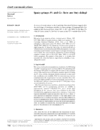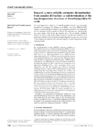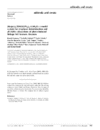issue contents
December 2009 issue

Cover illustration: Though cyclohexanol is a simple compound it has a rich phase diversity at low temperature. It forms a disordered glassy phase on cooling, but this can be transformed into ordered phases (II), (III) and the metastable (III'), which all have different hydrogen-bonding motifs. The series of transitions is attributable to the conformational flexibility of the hydroxyl group [Ibberson et al. (2008). Acta Cryst. B64, 573-582].
research papers










The crystal structures of three (S)-4-alkoxo-2-azetidinecarboxylic acids (with alkoxo = decyloxo, dodecyloxo and hexadecyloxo) were solved and refined from synchrotron X-ray powder diffraction data and compared with density-functional theory calculations.








short communications




addenda and errata

obituaries



 journal menu
journal menu

































